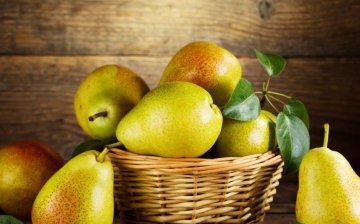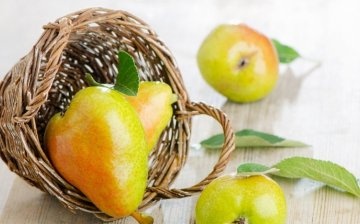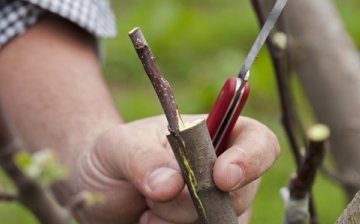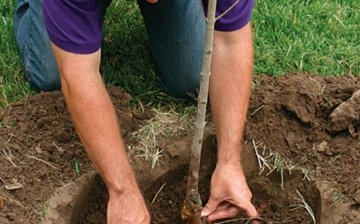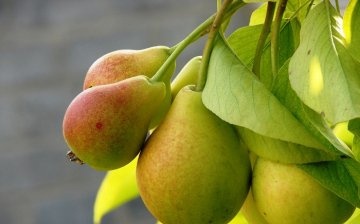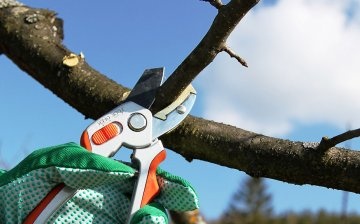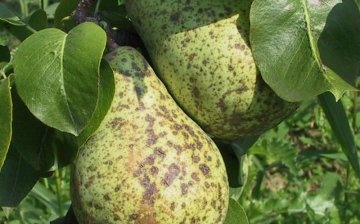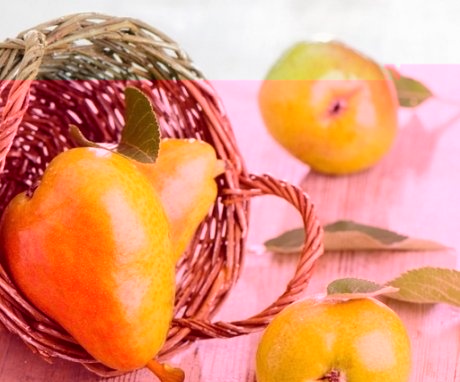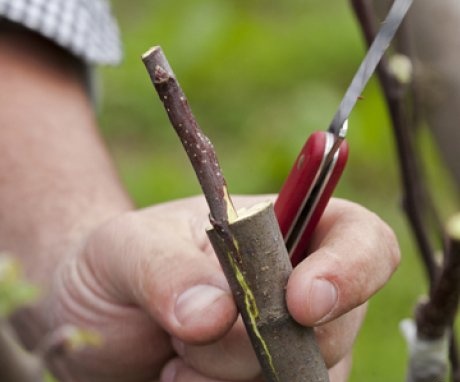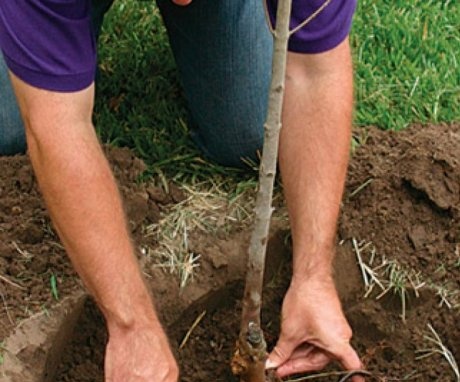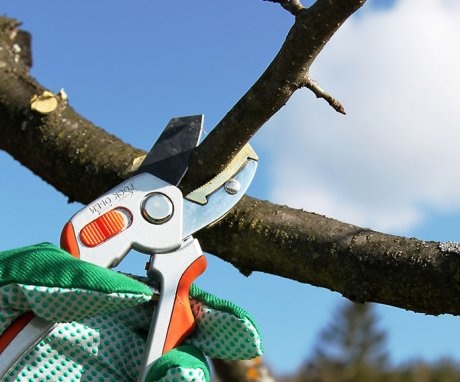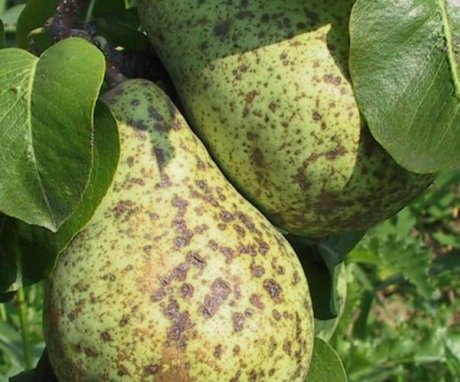The best winter pear varieties
Pear is the most widespread crop after the apple tree. The tree begins to bear fruit at the age of seven years and is quite demanding on the conditions. To get a good harvest, you need to provide the pear in a warm, dry place with good lighting. More than a thousand different varieties are known, which can be conditionally divided into groups: summer, autumn and winter. Winter species are of particular interest, because they can be grown in cold climatic conditions, and their fruits can decorate the New Year's table and spring holidays, due to their high preservation rates.
Winter-hardy varieties of pears are able to maintain their appearance and taste for a long time. The taste, aroma and consistency of winter pears more than in other species depend on the soil and climate, because the harvest is harvested quite late - in October and the trees have very little time to prepare for winter.
Content:
- The most popular varieties of winter pears
- Breeding methods for pear trees
- How to plant pears correctly
- Features of caring for a winter pear
- How trees are sick and who can harm them
The most popular varieties of winter pears
To get a good harvest of high-quality fruits, fertile and moist soils are needed, and the number of days with a stable warm temperature of at least fifteen degrees is also of great importance. There should be 110-115 such days per season.
A winter pear can bear fruit annually, it just needs to be prepared on time and correctly. The following varieties show good results:
- Belarusian late. Well suited for the middle northern lane. This variety has a medium ripening period. The crop is usually harvested in September or early October, and the fruit can be stored until the end of winter. The variety is high-yielding and winter-hardy, it also resists diseases and pests very well. The fruits are medium in size, their weight is 100-130 grams. Fruits are sweet with sourness and juicy have a standard slightly wide shape.
- Patriotic. A hybrid species from the parental pair Dekanka winter and Vere Boek, bred on the Crimean peninsula. Medium-sized trees have good resistance to harsh winter climates. Begin to bear fruit at the age of five. The variety has a high annual yield. Medium to large fruits are green in color and have excellent taste characteristics. Each pear weighs about 200 grams. Harvesting takes place in the last week of October. The fruits are stored until the new year. Trees have a strong immunity to scab.
- Krasnokutskaya dean's office. Medium-sized trees can freeze under too cold winters. Bears fruit in the seventh year of life. The amount of harvest from one tree can reach 80-100 kg. Fruits are green with a yellowish tinge and are distinguished by an oval shortened shape. The pulp is sweet and sour and quite juicy. At the end of September, the fruits are ready to eat, and after a month they reach final ripeness. The fruits are stored until the end of winter.
- The decanter is winter. The variety owes its origin to the Belgians. The fruits are barrel-shaped and can weigh either 140 or 400 grams. The rind is thick and dense, yellowish-green in color, may brown in the sun.The fruit is very juicy and sweet with a slight sourness. They ripen in early October and can remain until summer.
- Kondratyevka. Fruiting occurs annually, starting from the fifth year of life. Trees grow slowly, actively growing greenery. The fruits are of a standard shape and green when harvested, but when ripe they acquire a yellow-orange color. The fruits weigh from 150 grams and remain until the end of January.
- Josephine Mechelnskaya. The variety is especially drought-resistant, winter-hardy and unpretentious. Begins to bear fruit after eight years of life, however, if the seedlings are grafted on quince, then fruiting occurs after 5 years. The fruits are not large, reaching a mass of 60 grams, but on low trees they can be twice as large. Pears have a sweet and sour taste with moderate juiciness. The crop is harvested in mid-October and stored until January.
- Krasnokutskiy gift. The variety is very hardy and scab resistant. The beginning of fruiting occurs after the sixth year of life. Pears of a standard shape, yellow with ruddy stripes. The fruits are juicy and tender and have sweet and sour characteristics. They harvest at the end of September, but consumer maturity occurs in two weeks. The harvest is stored until early February.
- Saratovka. Productivity is high, stable and annual. Large fruits reach two hundred grams. Pears have a standard appearance and high flavor characteristics. Storage is long enough - until the end of winter.
- Pass-Crassan. A copy of the French selection gives a good harvest on fertile soils. The beginning of fruiting occurs in six years, and when grafted on a quince - in four. The crop is not rich, however, it consists of very large round fruits (up to 250 grams), and grafted on quince - up to 400 grams. The pulp is juicy, has a rich sweet taste and aroma. Slight acidity is allowed. The crop is harvested in early November. In regions with short summers, the fruits do not reach full maturity. And under basement storage conditions, pears can be eaten in March. Not particularly cold resistant.
- Olivier de Serre. Dessert hybrid of French selection requires special care. They give large spherical fruits of a dark green color (up to 200 grams), on low trees - up to half a kilogram. Differs in high taste characteristics. The crop is harvested in October, but the pear flavor is gained only by December and can lie until March.
Breeding methods for pear trees
Pear trees can be propagated in several ways:
- seed (used to grow rootstocks and to obtain new varietal groups)
- eyes
- shoots
- parts of roots
Cultivated species usually breed vaccinations or budding eyes and shoots on rootstocks, which are trees grown from seeds. Also, parts of shoots or cuttings are grafted onto the crown of an adult pear tree or other compatible species: quince, mountain ash, irgu. The pear develops well on hawthorn, but this applies to those varieties that are compatible with quince.
When grafted on a quince, the pear tree turns out to be undersized and its fruiting occurs in three to four years.
At the same time, the quality indicators of fruits are much higher than those of the same varieties grafted onto pear seedlings. However, the fruiting period of a pear grafted on a quince is much shorter - the duration of the productive period is 15-20 years.
In areas of the central and northwestern regions, where there are no chernozem lands, it is recommended to use seedlings of wild pears and local hybrids of the most cold-resistant varieties for rootstocks.
How to plant pears correctly
Before planting a pear tree, the soil should be properly prepared and this should be done at least a month before the event so that the earth has time to settle. For this:
- Dig planting holes 60 cm deep.
- The selected earth is mixed with organicsuch as manure.
The pear is planted in spring or autumn, as long as there is no frost.A tree is placed in planting holes with a diameter of about 100 cm and a depth of 60 cm so that the root collar protrudes 6 cm above the surface, straighten and sprinkle the roots so that there are no voids. As you fall asleep, the earth needs to be compacted. After filling the holes, depressions are made around the trees, the width of which should not be less than the diameter of the holes.
The planted pears are watered in several steps so that the water seeps out better; for watering each tree, 2-3 buckets of water are needed.
The planted trees must be tied to a support with twine in two places: at a height of 15-20 centimeters from the soil surface and under the crown. The bandage should not be tight, and the cover itself is made in the form of a figure eight, so that when the soil shrinks pear did not hang on supports and were not injured from friction of the bandage in strong winds.
With the onset of cold weather, the trunks of young pears are covered with a spruce forest, and the soil around them is sprinkled with a layer of peat or manure. This will give protection from frost and gnawing. pests.
Features of caring for a winter pear
In order for winter pears to develop correctly and give a good harvest, they need to provide proper care, which consists in regular watering, top dressing, pruning, loosening the soil and removing weeds.
Winter varieties of pears do not require a lot of moisture, but they also have a negative attitude towards drought.
Therefore, with the onset of warm days with an active sun and in the absence of precipitation, trees are watered once a week. Pour a bucket of water under each tree. And in severe drought, the frequency of watering should be doubled. It is very important to remember that during the period of fruit ripening, watering should be stopped altogether.
For the normal development of the pear, regular fertilization is required. With a lack of such an element as nitrogen, the growth of the tree is slow, the foliage is yellowed, and the ovaries are crumbling. Lack of phosphorus leads to poor formation of fruit buds, and potassium deficiency leads to a cessation of shoot development. The tree also needs calcium, which is responsible for the formation of seeds in fruits.
To provide the pear with all the necessary elements, you need to make mineral and organic dressings:
- Manure and compost introduced annually, alternating with mineral supplements.
- When applying phosphorus fertilizers, the rate is calculated for 4 years, and potash - for 2 years.
- The next year after planting, the soil around the trees must be loosened and at the same time a certain rate of nitrogen fertilizers in the form of ammonium nitrate must be applied.
- At the same time, organic matter is introduced - humus and everything is mulched with a small layer of peat. Usually this procedure is carried out in the spring, but fertilizers can also be applied in two doses and the second is carried out in the summer.
- In the fourth or fifth year of life, top dressing is recommended to be applied by a trench or borehole method. For this, trenches or wells are dug around the trees at a short distance, into which fertilizers are then placed, calculated by the volume of the trenches.
Pruning pear trees
When planting winter pears, it must be remembered that young trees need annually form a crownso that they give a greater yield. The first pruning carried out in the second year of life at a time when the kidneys are just beginning to swell. The trees are pruned vertically so that there is no active development in height, but lateral shoots are formed. Each year, the growth of the last year is cut by 1/3 of the length. This improves the growth of trees.
You also need to thin out the ovaries and fruits so that the fruits are ripe and tasty. Irregular or flawed fruits are removed. Also, it is not necessary to allow overloading of trees - this can lead to the frequency of fruit formation.
It should not be forgotten that young pear trees need a trunk shelter for the winter and protection from rodents.
Therefore, before the winter frosts, the trunks of pears are tied with spruce, reed or parchment, having previously treated the bark of young seedlings with chalk, and older ones with lime.The bait with the poison fits into the minks of the pests. And during the period of snow melting, the soil around the trees should be trampled down. Rodent protection continues until the bark is coarse.
How trees are sick and who can harm them
Like all trees pears can get sick and they can be attacked by pests:
- Scab is a disease caused by a fungus. The disease is capable of affecting all parts of the tree and manifests itself at the time of bud break. A greenish bloom forms on the leaves and they soon begin to fall off. From the foliage, the disease actively spreads along the branches and fruits and can destroy the entire crop.
- Sooty fungus - the leaves and shoots of trees are covered with a black bloom, which rapidly spreads over the entire surface of the tree and can destroy not only the harvest, but the entire orchard.
- Powdery mildew - a fungus that spreads through foliage, inflorescences, buds and shoots. It manifests itself as a white sticky bloom, which later darkens. The disease inhibits the development of pears and prevents the formation of ovaries.
- Fruit rot affects all insect-damaged or injured fruits. This disease is considered infectious and is transmitted to other pears through human hands or bird paws.
- Pear moths - caterpillarsthat devour fruit. They attack winter pear varieties less often than summer ones, because the fruits of the former are much tougher than the latter.
- Leafworm - caterpillars, which, during pupation, wrap themselves in a leaf and entangle it with cobwebs. During the period of their life, these pests eat away the buds, and then switch to foliage. They can also damage buds and fruits.
- Fruit mites - feed on foliage sap. As a result, they fall off.
Prevention: timely pruning of pears and destruction of infected fallen leaves. In the spring-autumn period, treatment with solutions of urea, Bordeaux liquid, colloidal sulfur and copper oxychloride is recommended.
Treatment: in addition to preventive measures, insecticidal preparations are used, and special traps, such as trapping belts, are installed for some types of insect pests.
Following all the recommendations will help to properly grow winter varieties of pears and achieve a good annual harvest.
Winter varieties of pear trees should be present in every garden. This will allow you to feast on healthy fruits for a long time, because winter fruits can be stored until the New Year holidays, and some specimens throughout the spring.
More information can be found in the video:



